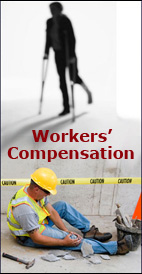STATE GOVERNMENT
Workers’ compensation system posts strong gains
By DAVID GROVES
The Stand
OLYMPIA (May 6, 2013) — The state just got some good news about the improving post-recession financial outlook of Washington’s workers’ compensation system. And that’s bad news for Republicans’ special-session effort to revive legislation expanding the controversial lump-sum buyouts of injured workers.
 At last Tuesday’s quarterly Workers’ Compensation Advisory Committee (WCAC) meeting, stakeholders learned that Washington’s state-run industrial insurance system had a net operations income of $250 million in the second half of 2012. The Department of Labor and Industries (L&I) credited higher investment income and, to a lesser extent, savings resulting from the continuing implementation of 2011 legislative changes for the strong performance.
At last Tuesday’s quarterly Workers’ Compensation Advisory Committee (WCAC) meeting, stakeholders learned that Washington’s state-run industrial insurance system had a net operations income of $250 million in the second half of 2012. The Department of Labor and Industries (L&I) credited higher investment income and, to a lesser extent, savings resulting from the continuing implementation of 2011 legislative changes for the strong performance.
But here’s the news from Tuesday that could be the final nail in the coffin of 2013 legislative efforts to cut injured workers’ benefits. The system’s Contingency Reserve funds increased 64 percent from $580 million in June 2012 to $953 million at the end of the year. That number is significantly higher than L&I’s previous projection that there would be $720 million in those funds at the end of the year.
That’s important because legislators in the Republican-controlled State Senate have cited low reserve funds and the future rate increases that could be necessary to boost those reserves as the motivation for passing controversial bills that would expand lump-sum buyouts of injured workers and grant employers more control over injured workers’ medical treatment.
Those bills, which faced opposition from both the Democrat-controlled House and from Gov. Jay Inslee, died in the regular session. But Senate Republicans kept the issue alive for the special session that begins May 13 by assuming savings in their budget that they claim will result from the bills’ passage. (The Washington State Labor Council disputes the veracity of those assumptions.)
“These latest numbers are good news for our workers’ compensation system and they strengthen the case for allowing the 2011 changes to be fully implemented before rushing through more legislation that put injured workers and their families at risk,” said WSLC President Jeff Johnson, who attended Tuesday’s WCAC meeting. “Although we’d like to see those reserve funds even higher, this will decrease the pressure to raise rates for employers and workers.”
What happened to the ‘Mother of All Rate Increases”?
The state workers’ compensation reserve funds were drawn down to a low level during the Great Recession and the subsequent slow economic recovery. Increased liabilities coupled with recession-related investment losses put a strain on the system, but administrators opted to draw down reserves in order to hold down rate increases. After previous recessions, rate increases had been significantly higher (see chart).
Prompted by a State Auditor report critical of low reserve levels, at the June 2012 WCAC meeting, business and labor stakeholders asked L&I to present possible scenarios for rebuilding reserves. The worst-case of those scenarios — one that envisioned 19% rate increases for 10 consecutive years — sent business lobbyists into a tizzy, predicting the “mother of all rate increases” in 2013 and that the system’s “long term financial problems” would be a major issue in the Inslee-McKenna gubernatorial race that fall.
That panic turned out to be overblown when L&I announced a few months later that, for the second straight year, there would be no average rate increase at all in 2013. And even without an increase, L&I projected it would be able to set aside an additional $82 million into the State Fund reserves by the end of 2013 but warned that future rate increases may be necessary to rebuild reserves.
As we learned last week, L&I strong performance last year unexpectedly bolstered those reserves by another $373 million over second half of 2012. To put that into perspective, a more realistic 10-year rate plan devised last year by L&I to achieve WCAC’s desired reserves-to-liabilities ratio indicated that a 5.5% rate increase in 2014 would raise an additional $69 million for reserve funds.
The Washington State Labor Council reminds that the decisions made in Olympia regarding the workers’ compensation system affect real people who have suffered real injuries and illnesses that change their lives — and affect their entire family’s well-being. Here’s an interview with one of the system’s success stories, former Boeing employee Stephen Kearns:
UPDATE
► At the Washington State Wire (May 9) — A bit of good news from Wall Street has labor challenging the case for workers’ comp reform — Suddenly it’s clear what the argument is going to be — that a rebounding stock market ought to erase all worries that an enormous rate increase is around the corner. And that means lawmakers ought not to consider cost-saving reform legislation that would allow more workers to cash out their disability claims in the form of “structured settlements.”
 EDITOR’S NOTE — This WSW response to The Stand’s May 6 report (above) suggests that the Washington State Labor Council is suddenly more concerned with the system’s investment returns than about injured workers. The WSLC’s opposition to this year’s business-backed “reforms” has consistently focused on the harm those proposals would do to injured workers and their families. Conversely, business lobbying groups’ justification for promoting those proposals has never been about injured workers’ best interests. In fact, one of their bill’s explicit purposes is to prevent the state government from considering what’s in a worker’s “best interests” when approving these lump-sum buyouts. No, their justification for expanding compromise-and-release buyouts has always been about saving the system money and boosting its reserves to avoid future rate increases. That’s why The Stand pointed out that the 64% increase in system reserves to $953 million undermines business lobbying group’s case for more benefit cuts.
EDITOR’S NOTE — This WSW response to The Stand’s May 6 report (above) suggests that the Washington State Labor Council is suddenly more concerned with the system’s investment returns than about injured workers. The WSLC’s opposition to this year’s business-backed “reforms” has consistently focused on the harm those proposals would do to injured workers and their families. Conversely, business lobbying groups’ justification for promoting those proposals has never been about injured workers’ best interests. In fact, one of their bill’s explicit purposes is to prevent the state government from considering what’s in a worker’s “best interests” when approving these lump-sum buyouts. No, their justification for expanding compromise-and-release buyouts has always been about saving the system money and boosting its reserves to avoid future rate increases. That’s why The Stand pointed out that the 64% increase in system reserves to $953 million undermines business lobbying group’s case for more benefit cuts.
It’s telling that the Washington State Wire, a news blog funded by corporate lobbying groups like the AGC and managed by the Government Affairs Director of the Washington Business Alliance, did not think that the quickly improving financial condition of the workers’ compensation system was newsworthy. Previous Workers’ Compensation Advisory Council meetings with less positive news merited dramatic, alarming WSW coverage. It was not until The Stand reported last week’s good news that the WSW decided it was necessary to “respond” with some sky-is-still-falling damage control — just as other business lobbying entities did. ‘Nuff said.






